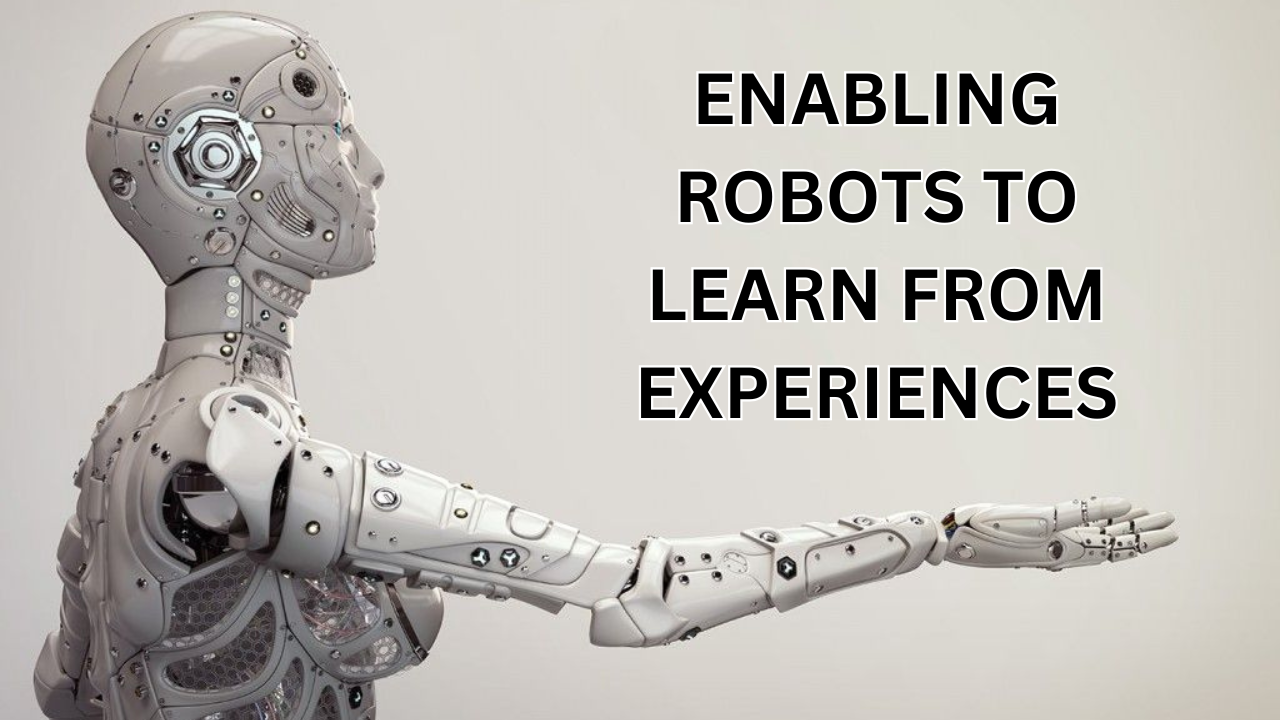Enabling robots to learn from experiences represents a significant advancement in artificial intelligence and robotics paving the way for machines to adapt and perform tasks with human-like flexibility unlike traditional programming which relies on predefined instructions experience-based learning allows robots to improve their performance over time by interacting with their environment this approach leverages techniques such as machine learning reinforcement learning and neural networks to process data recognize patterns and make informed decisions by learning from successes and failures robots can refine their actions respond to unpredictable situations and even develop innovative solutions to complex problems this capability is crucial in dynamic environments such as healthcare.
Robots that learn from experiences reduce the need for constant human intervention enhancing efficiency and scalability the integration of sensory systems data analytics and adaptive algorithms enables these robots to mimic human cognitive processes bridging the gap between artificial and natural intelligence as technology progresses experience-based learning holds the potential to redefine human-robot collaboration creating smarter systems that are not only reactive but proactive continuously evolving to meet the challenges of an ever-changing world.
Techniques for Enabling Robot Learning:
Enabling robots to learn effectively from experiences requires a combination of advanced techniques that simulate human learning processes. One fundamental approach is reinforcement learning (RL) where robots are programmed to interact with their environment and learn through trial and error in RL, the robot receives feedback in the form of rewards or penalties based on its actions enabling it to refine its decision-making over time to achieve optimal performance another key technique is supervised learning which involves training robots on labeled datasets to recognize patterns and perform specific tasks with precision this method is particularly effective for tasks like image recognition or language processing where vast amounts of pre-annotated data can guide the learning process.
Where robots observe and mimic human actions allowing them to learn complex tasks such as assembly or object manipulation this often involves integrating sensory data from vision touch and other inputs to replicate human behavior accurately advancements in deep learning have empowered robots to process vast amounts of unstructured data leveraging neural networks to model intricate relationships and make intelligent predictions to complement these techniques transfer learning enables robots to apply knowledge learned in one domain to a different but related context accelerating the learning process and improving adaptability.
Applications of Robot Learning:
The applications of robot learning span a wide range of industries revolutionizing how tasks are performed and creating opportunities for greater efficiency precision and adaptability in manufacturing robots equipped with learning capabilities can adapt to changes in production lines, handle diverse materials, and optimize assembly processes reducing downtime and improving output in healthcare robotic systems are increasingly utilized for tasks such as surgical assistance where learning algorithms enhance precision or rehabilitation where adaptive robots tailor their movements to individual patient needs.
In agriculture learning robots analyze environmental conditions optimize crop management and even perform tasks like harvesting with minimal human intervention service robotics is another booming area, with robots learning to assist in tasks such as cleaning customer service and elderly care providing personalized and efficient support in disaster response robots that learn can navigate hazardous terrains locate survivors and adapt to unpredictable conditions significantly enhancing rescue operations in fields like education and entertainment robots that learn are transforming how we interact with technology by personalizing experiences and creating engaging responsive systems.
Human-Robot Interaction:
Human-robot interaction (HRI) is a rapidly advancing field that focuses on creating seamless intuitive and efficient communication between humans and robotic systems the goal of HRI is to enable robots to understand human intentions emotions and behaviors while responding appropriately to foster collaboration and trust this interaction encompasses various form physical collaboration in workplaces to conversational interfaces powered by natural language processing robots are being designed to recognize speech gestures and facial expressions allowing them to interpret and react to human needs in a natural and meaningful way.
Industrial settings enable robots to work alongside humans in shared spaces performing tasks that require precision and adaptability while minimizing risks in healthcare robots that interact with patients can provide companionship assist in therapy or support medical staff with routine tasks social robots are becoming increasingly prominent in education and customer service engaging users in personalized and interactive ways the design of HRI systems often integrates fields such as psychology cognitive science and artificial intelligence to ensure that interactions are not only functional but also empathetic and user-friendly as robots become more embedded in daily life improving human-robot interaction will be key to ensuring that these systems are effective safe and widely accepted by society.
Healthcare and Assistive Robots:
Healthcare and assistive robots are transforming the medical field by enhancing patient care improving efficiency, and addressing challenges such as staff shortages and an aging population these robots are designed to perform a wide range of tasks from assisting with routine procedures to providing emotional support to patients in surgical settings robotic systems like da Vinci enhance precision flexibility, and control enabling minimally invasive procedures with faster recovery times rehabilitation robots aid in physical therapy helping patients regain mobility and strength by providing tailored exercises and real-time feedback.
In hospitals, robots handle repetitive tasks like cleaning delivering supplies, or transporting medications reducing the burden on medical staff and minimizing the risk of errors social robots designed with empathetic and interactive capabilities are being used to alleviate loneliness in patients particularly in pediatric and geriatric care by providing companionship and cognitive stimulation telepresence robots enable remote consultations allowing doctors to connect with patients in underserved areas or during emergencies.
